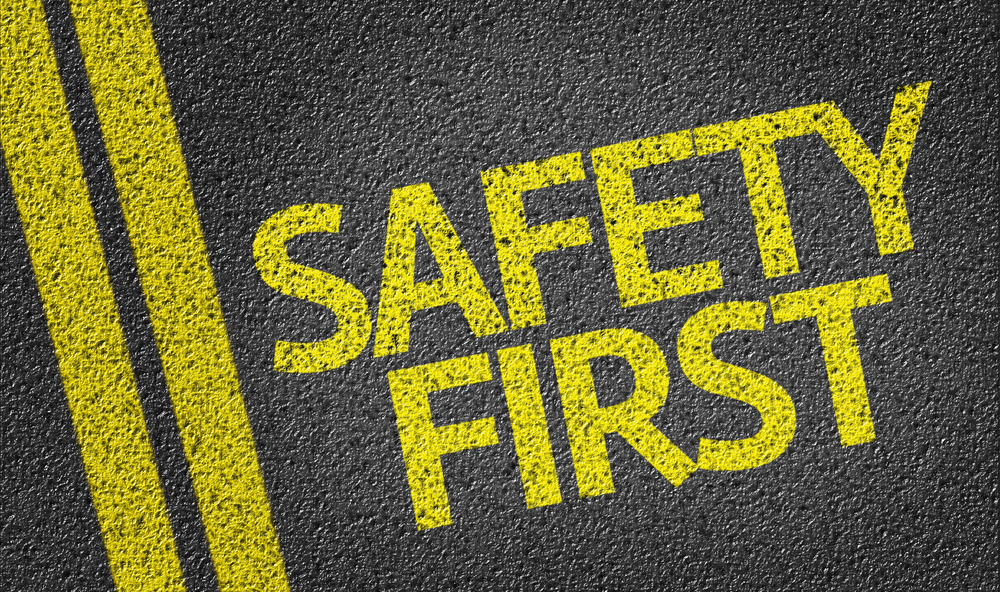Ensuring Fun and Safety: Your Guide to Playground Safety
Posted by May Recreation Content Team on

Playgrounds offer children the perfect space to run, jump, and play freely with joy and exuberance, but the equipment, surfaces, and surrounding area can also pose injury risks which is why playground safety is an important issue.
“Playgrounds and outdoor play equipment offer kids fresh air, friends, fun, and exercise. But it's important to make sure that faulty equipment, improper surfaces, and unsafe behavior don't ruin the fun,” advises KidsHealth.
The Consumer Product Safety Commission (CPSC) says that each year more than 200,000 children go to U.S. hospital emergency rooms with injuries associated with playground equipment – with most injuries occurring when a child falls from the equipment onto the ground.
Playground Safety Checklist
Playgrounds, while designed for enjoyment, can pose risks to children if safety measures are not in place.
The Kentucky League of Cities (KLC) says that the Centers for Disease Control reports that emergency rooms treat more than 200,000 children under the age of 14 every year for playground-related injuries.
“Most deadly playground accidents occur at home, but 75 percent of nonfatal injuries are at public playgrounds. While most are at schools and daycares, cities should take steps to review their playground safety procedures,” says the KLC.
The CPSC offers the following 10-step Public Playground Safety Checklist:
- Make sure surfaces around playground equipment have at least 12 inches of wood chips, mulch, sand, or pea gravel, or are mats made of safety-tested rubber or rubber-like materials.
- Check that protective surfacing extends at least 6 feet in all directions from play equipment. For swings, be sure surfacing extends, in back and front, twice the height of the suspending bar.
- Make sure play structures more than 30 inches high are spaced at least 9 feet apart.
- Check for dangerous hardware, like open "S" hooks or protruding bolt ends.
- Make sure spaces that could trap children, such as openings in guardrails or between ladder rungs, measure less than 3.5 inches or more than 9 inches.
- Check for sharp points or edges in equipment.
- Look out for tripping hazards, like exposed concrete footings, tree stumps, and rocks.
- Make sure elevated surfaces, like platforms and ramps, have guardrails to prevent falls.
- Check playgrounds regularly to see that equipment and surfacing are in good condition.
- Carefully supervise children on playgrounds to make sure they're safe.
Regular Maintenance and Inspections Can be Key to Safety
Regular inspections are essential for maintaining a safe playground environment. Here are some best practices for routine checks:
-
Daily Inspections:
-
Remove any debris or hazards from the play area.
-
Check for broken glass, sharp objects, or other potential dangers.
-
Ensure that all gates and fences are secure.
-
-
Weekly Inspections:
-
Examine play equipment for loose bolts, sharp edges, or signs of wear.
-
Inspect surfacing materials (e.g., mulch, rubber) for proper depth and condition.
-
Verify that swings and other moving parts are in good working order.
-
-
Monthly Inspections:
-
Assess structural integrity, focusing on connections and stability.
-
Lubricate moving parts to prevent rust and ensure smooth operation.
-
Inspect signage for visibility and clarity.
-
-
Yearly Inspections:
-
Conduct a comprehensive audit, including ground surfacing and equipment.
-
Test the resilience of safety surfacing materials.
-
Assess the overall structural integrity of the playground.
-
Special concerns to check for regularly should include vandalism, graffiti, and signs of pest infestation.
Severe Weather and Playgrounds: Keeping Kids Safe
Weather can significantly impact playground safety. After severe weather events – such as flooding, high winds, wildfires, and other natural disasters -- it is crucial to conduct special checks for:
- Damage Assessment:
- Inspect equipment for damage, including bent or broken components.
- Remove any debris that may have accumulated during the weather event.
- Inspect equipment for damage, including bent or broken components.
- Surfacing Inspection:
- Assess the impact on safety surfacing materials (e.g., flooding, erosion).
- Replace or repair damaged surfacing promptly.
- Assess the impact on safety surfacing materials (e.g., flooding, erosion).
Of course, it’s important to make sure children and others are away from playgrounds when severe weather does strike.
Playground Safety Tips
The American Academy of Orthopaedic Surgeons offers the following playground safety tips for kids:
- Getting Ready to Play
- Wear sunscreen so you don’t get sunburn.
- Wear shoes that keep your feet safe.
- Tell an adult if any playground equipment is broken.
- NEVER play on broken equipment; wait until it’s fixed.
- Wear sunscreen so you don’t get sunburn.
- Swinging
- Sit down while you swing.
- Only one person should swing on the swing at a time.
- Wait until the swing stops moving before you get off.
- Sit down while you swing.
- Slides
- Go down the slide one person at a time, sitting and FACING FORWARD.
- Don’t start to go down until the person ahead of you is on the ground and has moved away from the slide.
- Never climb up the front of the slide, and don’t climb over the guardrails!
- Go down the slide one person at a time, sitting and FACING FORWARD.
- If Something Goes Wrong:
- If there’s a problem or if someone gets hurt on the playground, ask an adult for help.
When Bad Things Happen: Have an Emergency Plan
Despite preventative measures, emergencies can still occur. Establishing a comprehensive emergency plan is essential.
“Early childhood programs, schools, after-school programs, and youth-serving organizations must be prepared to respond to emergency situations — injuries, natural disasters, violent incidents, and unknown adults on the playground — through a documented emergency plan,” says the National Program for Playground Safety (NPPS) . “The emergency plan should outline the process for urgent situations, from which all playground supervisors should be regularly trained.”
The NPPS recommends your playground emergency plan should include:
- A defined Crisis Management Team (e.g. Supervisors, Nurse, EMT).
- Action steps for different types of playground emergencies (e.g., injury, Illness, concussion, heat, serious accident, weapon, hazardous materials.)
- Emergency codes:
- Code Yellow: Use when a threat is detected on the playground.
- Code Red: Used when a crisis occurs.
- Code Green: Used when the danger has passed.
- Code Yellow: Use when a threat is detected on the playground.
- Required emergency kit items (e.g., contact information, child records, site plans of grounds, cell phones, bullhorn, children medical records).
- Documented Emergency Procedures.
- Training Procedures.
“When developing your plans for potential emergency situations, we recommend involving local emergency medical technicians (EMTs) and local police departments, as they can help map out emergency routes. Health consultants or nurses are also great resources to aid in prevention, protection, and safety,” says the NPPS.
Finally, once the plan is complete, all personnel should be trained on the procedures. Supervisors should also receive additional training on how to manage children during a crisis.
Working with Experienced Playground Designers is a Plus
Collaborating with reputable playground designers and installers, such as May Recreation Equipment and Design, can significantly enhance playground safety in the following ways:
- Expertise in Safety Standards:
- Designers understand and adhere to industry safety standards.
- Installers ensure equipment is properly assembled and secured.
- Designers understand and adhere to industry safety standards.
- Customized Solutions:
- Tailored designs consider the unique needs and safety requirements of the community.
- Installation follows best practices to guarantee safety and durability.
- Tailored designs consider the unique needs and safety requirements of the community.
- Regular Maintenance Programs:
- Partnering with professionals often includes access to routine maintenance programs.
- Regular inspections and repairs help address potential issues before they escalate.
- Partnering with professionals often includes access to routine maintenance programs.
Contact May Recreation Equipment and Design today in the greater Houston area for a playground design concept that emphasizes fun and safety.
